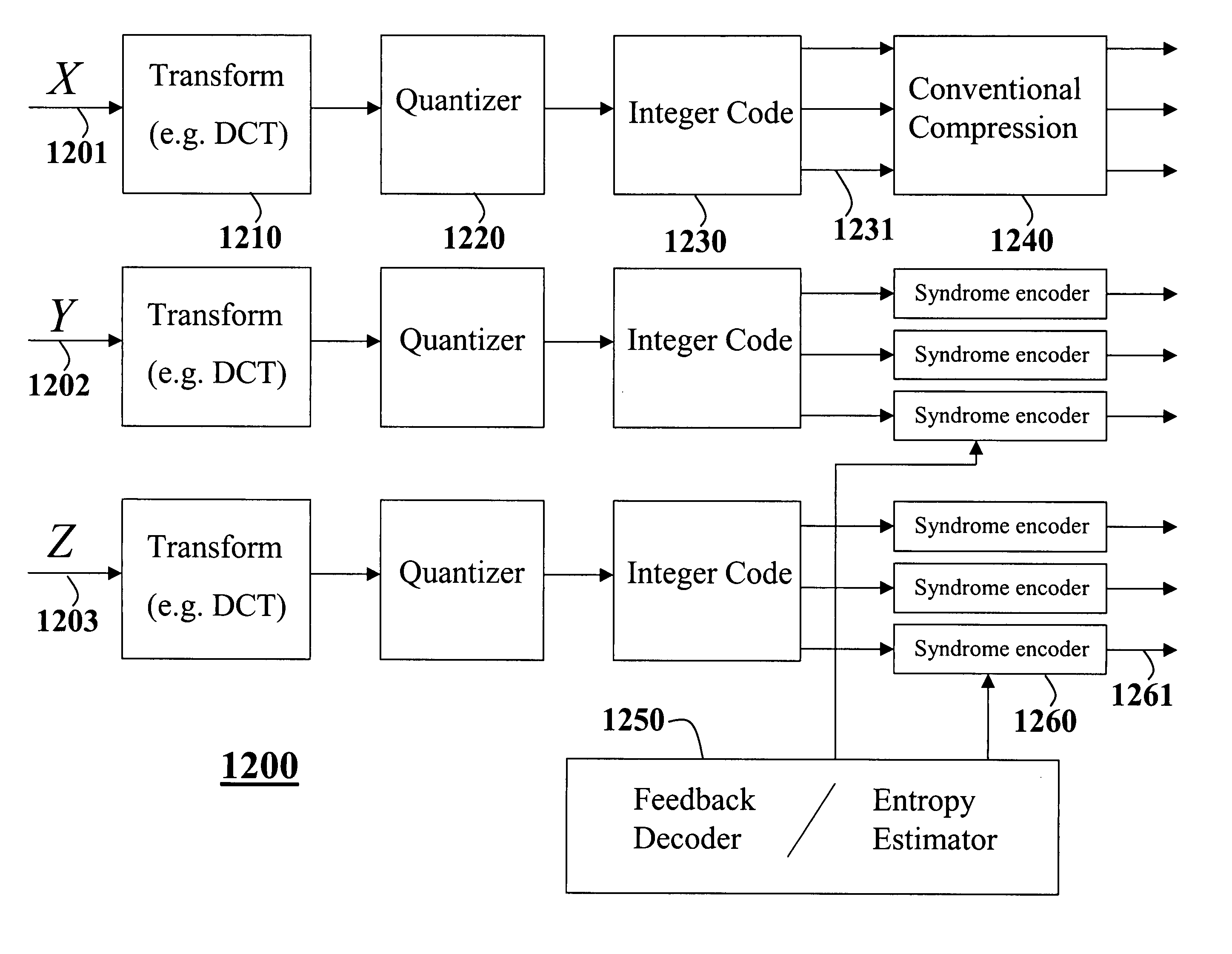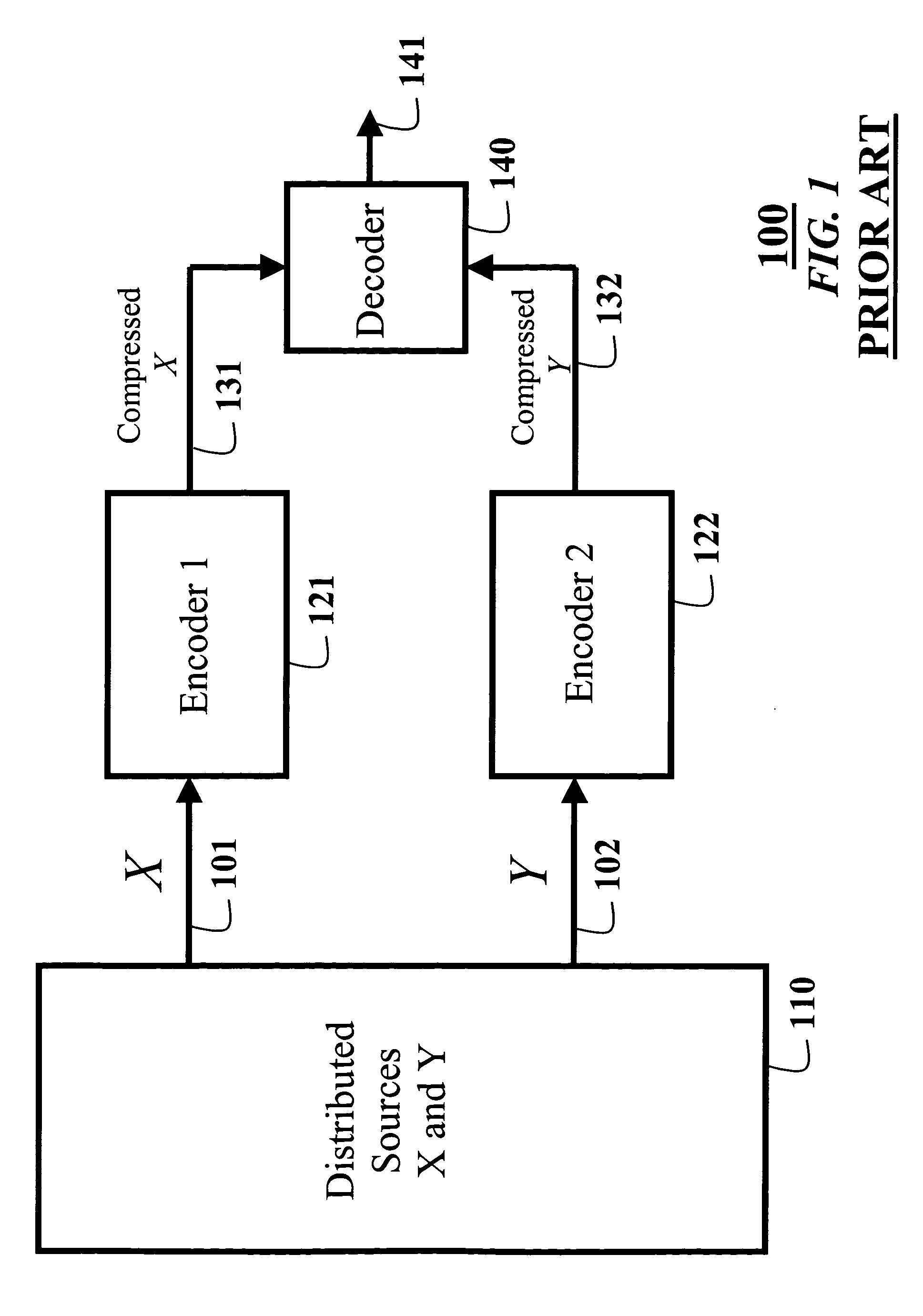A fundamental problem in the field of data storage and signal communication is the development of practical methods to compress input signals, and then to reproduce the compressed signals without
distortion or with a minimal amount of distortion.
This means that the signals cannot be encoded using a single
encoder.
They do not describe any practical method for implementing Slepian-Wolf compression encoders and decoders.
However, he did not provide any constructive details for practical methods for encoding and decoding.
Between 1974 and the end of the twentieth century, no real progress was made in devising practical Slepian-Wolf compression systems.
However, like Slepian and Wolf, Wyner and Ziv also do not describe any constructive methods to reach the bounds that they proved.
In “
lossy compression,” the reconstruction of the compressed signals does not perfectly match the original signals.
However, as the size of the parameters N and k increases, the complexity of a decoder for the code normally increases as well.
Constructing optimal hard-input or soft-input decoders for error-correcting codes is generally a much more complicated problem then constructing encoders for error-correcting codes.
The problem becomes especially complicated for codes with large N and k. For this reason, many decoders used in practice are not optimal.
Non-optimal hard-input decoders attempt to determine the closest
code word to the received word, but are not guaranteed to do so, while non-optimal soft-input decoders attempt to determine the
code word with a lowest cost, but are not guaranteed to do so.
However, such a procedure usually gives a performance that is significantly worse than the performance that can be achieved using a soft-input decoder.
Information theory gives important limits on the possible performance of optimal decoders.
For many years, Shannon's limits seemed to be only of theoretical interest, as practical error-correcting coding methods were very far from the optimal performance.
Such long codes cannot normally be practically decoded using optimal decoders.
The above example illustrates the basic idea behind syndrome-based coders, but the syndrome-based
encoder and decoder described above are of limited use for practical application.
None of the prior art syndrome coders are rate adaptive.
Thus, those coders are essentially useless for real-world signals with varying complexities and variable bit rates.
Fourth, the method should be incremental.
It should be understood that the described decoding method for RA codes is not optimal, even though the decoders are optimal for each of the sub-codes in the RA code.
The major difference is that an optimal decoder for the product codes is not feasible, so an approximate decoding is used for the product codes.
Recently, there have been some proposals for practical syndrome-based compression methods, although none satisfy all the requirements listed above.
However, their codes do not allow very high compression rates, and the rates are substantially fixed.
Because their method is not based on capacity-approaching channel codes, its compression performance is limited.
The performance is also limited by the fact that only hard-input (Viterbi) decoders are used in that method, so soft-input information cannot usefully be used.
In summary, the Pradhan and Ramchandran satisfies some of the requirements, but fails on the requirements of high compression rate, graceful and incremental rate-adaptivity, and performance approaching the information-theoretic limits.
That method does not allow for integer inputs with a wide range.
Because it is difficult to generate LDPC codes that perform well at very
high rate, that method also does not permit very high compression ratios.
That method also does not allow for incremental rate-adaptivity, which is essential for signals with varying data rates over time, such as video signals.
 Login to View More
Login to View More  Login to View More
Login to View More 


